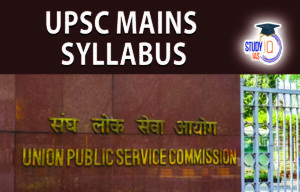Table of Contents
Q18. Does urbanisation lead to more segregation and/or marginalisation of the poor in Indian metropolises. (15m) – (Society)
क्या भारतीय महानगरों में शहरीकरण गरीबों को और भी अधिक पृथकरण और / या हाशिए पर ले जाता है?
Introduction:
India has seen tremendous urban progress. It is estimated that by 2030, more than 400 million people will be living in cities in India. Cities occupy 3 percent of land but the contribution to India’s gross domestic product is a huge 60 per cent. Growth of cities has been beneficial for overall poverty reduction in India, with urban growth accounting for about 80 percent of the total fall in poverty.]
Ways in which urbanisation leads to segregation of the poor:
- Migration into ghettos: Rural-to-urban migration causes rapid population growth, creating informal settlements with poor living conditions on the city outskirts.
o Asia’s largest slum, Dharavi, exemplifies urban poverty in Mumbai with overcrowded conditions and limited basic services.
- High Property Costs: Soaring land and housing prices force low-income families to live in subpar conditions on city peripheries.
o In Bengaluru, soaring property prices have forced the urban poor into slums on the city’s outskirts, while high-rise apartments cater to the affluent.
- Inadequate Services: Insufficient urban planning results in limited access to essentials like water, healthcare, and education in these settlements.
o Delhi showcases stark socioeconomic disparities, with gated communities alongside underdeveloped neighborhoods.
- Social Division: Affluent neighborhoods are often physically separated from low-income areas, isolating the poor economically and socially.
o Manual scavenging, a degrading and dangerous job, is prevalent in Chennai, perpetuating the marginalization of certain communities.
- Informal Jobs: The urban poor often work in the unstable informal sector, increasing their economic vulnerability.
o Kolkata’s informal sector, including street vending and rag-picking, keeps the urban poor economically vulnerable.
- Discrimination: Discrimination against the urban poor hinders their access to education, healthcare, and employment.
o Rohingya refugees in Hyderabad face discrimination and limited access to essential services, deepening their marginalization.
- Policy Struggles: Policymakers struggle to provide housing and services, sometimes unintentionally marginalizing the poor due to resource constraints and ineffective policies.
o Chennai’s policies to relocate slum dwellers to the outskirts have been criticized for pushing the poor away from opportunities and services.
Ways in which urbanization has helped in inclusion of the poor:
- Improved Service Access: Urbanization offers better access to healthcare, education, sanitation, and clean water.
o E.g.: Karnataka’s Rajiv Arogya Bhagya scheme provides free healthcare services to urban poor.
- Social Safety Nets: Robust safety nets in cities aid vulnerable populations.
o E.g.: Delhi’s night shelters offer housing and support to homeless urban populations.
- Financial Inclusion: Urban areas offer access to microfinance and financial services, aiding economic mobility.
o E.g.: SKS Microfinance empowers the urban poor in India with small loans.
- Affordable Housing: Affordable housing programs and slum rehabilitation projects bring the poor closer to job opportunities.
o E.g.: Pradhan Mantri Awas Yojana (PMAY) reduces housing costs for the urban poor.
- Education and Skills: Urban centers offer better access to education and skill development opportunities.
o E.g.: Don Bosco Tech in Mumbai provides skill development programs for better job prospects.
- Government Schemes: Government initiatives, like affordable housing and employment programs, support the urban poor.
o E.g.: National Urban Livelihoods Mission (NULM) offers skill training and employment opportunities
Way forward:
- Affordable Housing Programs: Ensure that affordable housing projects are well-connected to urban infrastructure and job centers.
- Inclusive Urban Planning: Prioritize inclusive development in urban planning, avoiding physical segregation of poor neighborhoods from affluent ones.
- Slum Upgradation: Focus on improving living conditions for slum dwellers rather than displacing them.
- Economic Opportunities: Promote the growth of labor-intensive industries and microenterprises that can absorb low-skilled labor.
- Social Services: Increase the availability and accessibility of essential services like healthcare, education, and childcare facilities in marginalized areas.
- Public Transportation: Invest in affordable and efficient public transportation systems, including buses and metro networks, to reduce commuting costs and time for the urban poor.
Conclusion:
Increased access to practical, demand-driven, and customised capacity building programs and opportunities for urban legislative and planning bodies, including for resource mobilisation and stronger budgeting and accounting practices.
Check out the UPSC Mains GS Paper 1 2023 Analysis with detailed expatiation of the topics of Mains GS Paper 1 By the Study IQ Experts


 NCERT Books for UPSC Preparation, Check ...
NCERT Books for UPSC Preparation, Check ...
 UPSC Syllabus 2025, Check UPSC CSE Sylla...
UPSC Syllabus 2025, Check UPSC CSE Sylla...
 UPSC Mains Syllabus 2025, Optional Sylla...
UPSC Mains Syllabus 2025, Optional Sylla...





















